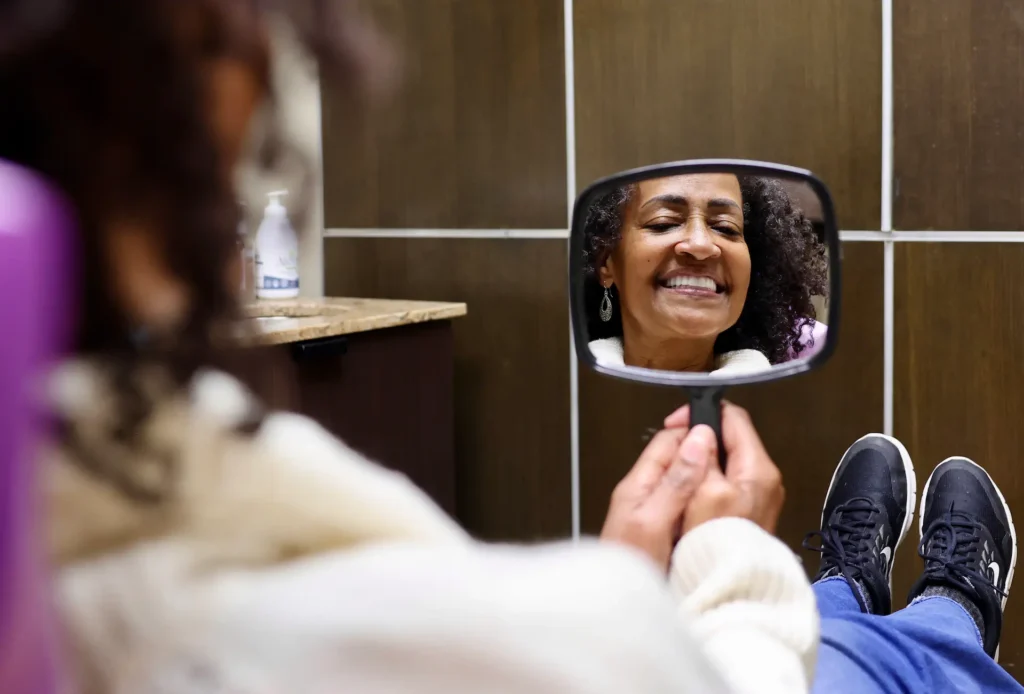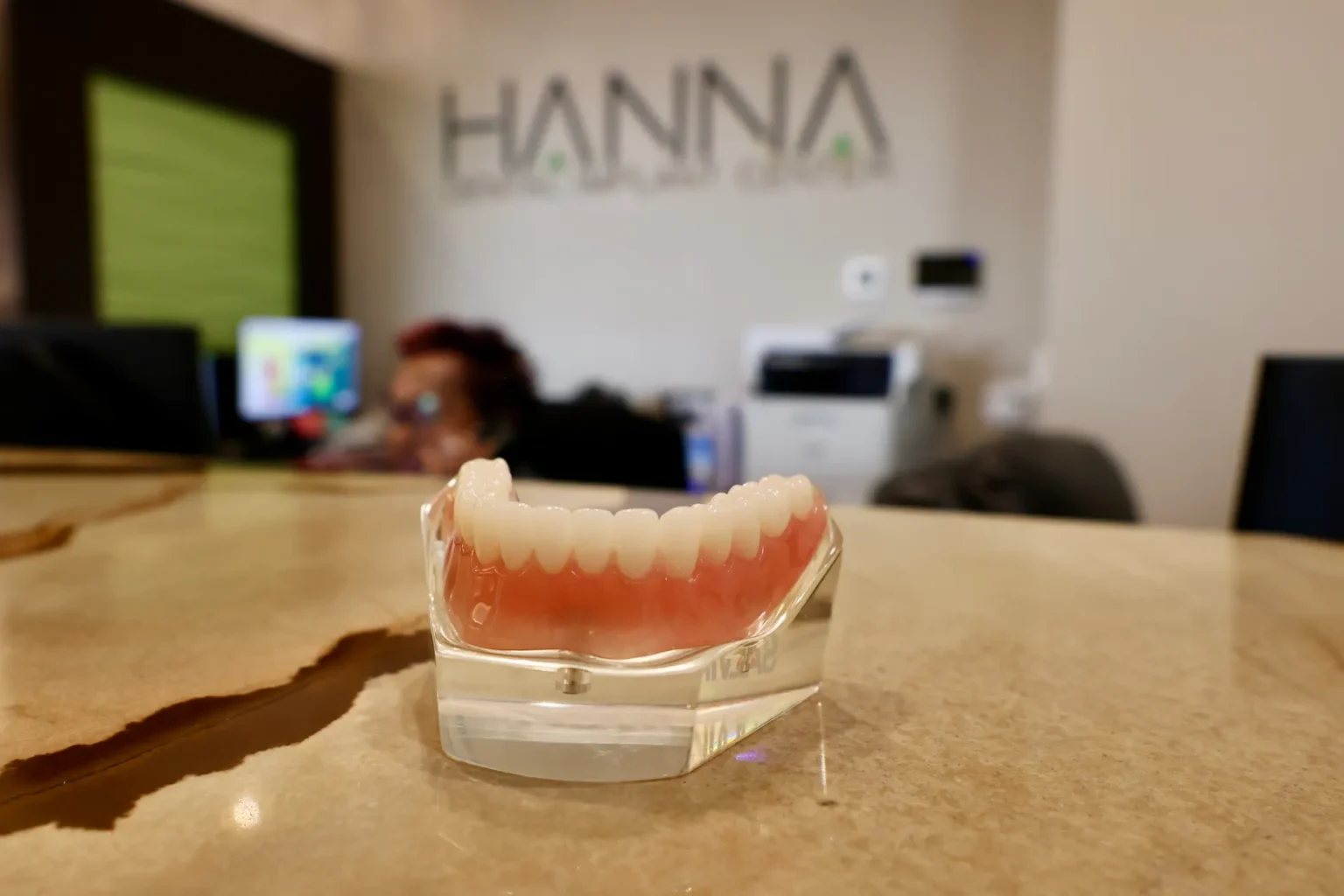Our teeth come in all sizes, shapes, and alignments—some are straight, while others may be slightly crooked. You might wonder why this is the case and how you can change it.
Let’s explore the reasons behind crooked teeth, the potential oral health issues they can lead to, and the various treatments available to help straighten them.
What Causes Crooked Teeth?
Crooked teeth can result from several factors, each playing a role in how your teeth align in your mouth. Here are some of the causes of crooked teeth:
Genetics
Your family’s genetic makeup can influence the size of your teeth, the shape of your jaw, and how your teeth come in. Just as you might inherit eye color or height from your parents, you can also inherit traits that lead to crooked teeth. If your parents had crooked teeth or issues with their jaw, you might experience similar challenges.
Poor Oral Hygiene Habits
Not caring for your teeth and gums can lead to dental problems, contributing to crooked teeth. Plaque buildup, for example, can cause gum disease. When gums are unhealthy, teeth can become loose and move out of place.
Early Baby Tooth Loss
Losing baby teeth too early can disrupt the natural growth and alignment of permanent teeth. Baby teeth act as placeholders for adult teeth. If they fall out too soon, the remaining teeth can shift into the empty spaces, causing alignment issues for when permanent teeth come in.
Thumb Sucking
Thumb sucking is a common habit in children, but doing it beyond a certain age can push teeth out of alignment. The pressure from the thumb against the teeth and jaw can cause the teeth to move into crooked positions.
Malnutrition
Proper nutrition is essential for the development of healthy teeth and gums. A lack of essential nutrients can affect the mouth’s overall health, potentially leading to dental issues that contribute to crooked teeth. This is especially critical during a child’s early development.
Tongue Thrusting
Tongue thrusting, the habit of pushing the tongue forward against the teeth when swallowing or resting, can also lead to misaligned teeth over time. This constant pressure can push teeth outward, contributing to crookedness.
Mouth Breathing
Chronic mouth breathing, especially in children, can affect the way the jaw develops and how teeth align. It can lead to a narrower jaw, which doesn’t provide enough space for teeth to come in straight.
Trauma
Accidents or injuries to the face can damage teeth and the jaw, leading to crooked teeth. This includes sports injuries or any impact that affects the mouth area.
Recognizing the reasons behind crooked teeth is the first step toward addressing them. With proper care and treatment, you can correct these issues and achieve a healthier, more aligned smile.
5 Oral Health Problems Caused by Crooked Teeth
Having crooked teeth is not just about appearance. It can also lead to several oral health issues.
Periodontal Disease
Crooked teeth can make it hard to clean your teeth properly. This can lead to plaque buildup, increasing gum disease risk. Gum disease starts with inflamed gums (gingivitis) and can progress to a more serious condition (periodontitis), where the support for your teeth is damaged.
Chewing and Digestive Problems
When your teeth don’t fit together correctly, it can be difficult to chew food into small, digestible pieces. This can lead to digestive issues since large pieces of food are harder for the stomach to break down. Proper alignment of teeth helps in efficient chewing and digestion.
Excess Wear
Crooked teeth often don’t distribute the pressure of biting and chewing evenly. Over time, this can lead to excessive wear on certain teeth, cracked teeth, or even jaw pain. Misaligned teeth can also cause strain on the jaw muscles, leading to TMJ disorders and chronic headaches.
Speech Difficulties
The alignment of your teeth can affect your ability to pronounce certain sounds. Misaligned teeth can cause speech impediments, making it hard to speak clearly. This is because the position of teeth influences how you form sounds.
Self-esteem Issues
Beyond the physical health impacts, crooked teeth can also affect your confidence and interactions with others. Many people feel self-conscious about their smiles, which can lead to avoiding smiling or feeling anxious in social situations.
Addressing crooked teeth not only improves your smile but also helps prevent these oral health issues, contributing to overall better health and well-being.
5 Straightening Options for Crooked Teeth
Treating crooked teeth improves your smile and oral health. There are several treatment options available, depending on the severity of the crookedness and your personal needs.
Braces
Braces are one of the most common methods for straightening teeth. They consist of metal brackets attached to your teeth, connected by wires. The orthodontist tightens the wires periodically to gradually move your teeth into the correct position. Braces are effective for correcting a wide range of alignment issues, but they require regular visits to the orthodontist for adjustments.
Clear Aligners
Clear aligners, like Invisalign, are a more discreet option for straightening teeth. They are custom-made, transparent plastic trays that fit over your teeth. You get a series of aligners, each slightly different, which you change every 2-3 weeks. Each set shifts your teeth a little closer to the desired position. Clear aligners are popular because they’re almost invisible and can be removed for eating and brushing.
Retainers
Retainers are often used after braces to keep teeth in their new position, but they can also correct minor crookedness on their own. There are two main types: fixed-bonded to the back of your teeth and removable, which you can take out as needed. If your teeth are only slightly crooked due to minor overcrowding, a retainer might be a suitable option.
Palatal Expanders
Orthodontists may recommend a palatal expander for children whose mouths are too small to accommodate their adult teeth. This device is attached to the upper molars using bands. It gradually widens the upper jaw by applying pressure to the palatal bones, creating more space for the teeth to align properly.
Extraction and Dental Implants
Misaligned teeth can cause aesthetic concerns and impact your bite and overall oral health. In cases where severe misalignment is present, extraction of the affected teeth and subsequent dental implant placement can offer an effective solution. Those dealing with other dental issues like decay or broken teeth can also benefit from dental implants as a solution.

By removing the misaligned teeth, we create space for the implant-supported restorations to be precisely positioned, resulting in a more aligned and balanced smile.
Dental implants, as stable and durable replacements for missing teeth, act as anchors to support the surrounding teeth, encouraging them to gradually shift into proper alignment.
This comprehensive approach not only improves the appearance of your smile but also restores optimal function and bite alignment. With the expertise of our skilled team at Hanna Dental Implant Center, you can expect a personalized treatment that addresses your unique alignment needs, giving you the confidence of a beautiful, harmonious smile. Trust in our experience and commitment to your oral health and aesthetic goals.
Choosing the right treatment depends on various factors, including the severity of crookedness, your lifestyle, and what you’re comfortable with. It’s important to consult with an orthodontist who can recommend the best option for your specific situation.
Want to Get Your Teeth Fixed?
Understanding the root causes of crooked teeth is essential for prevention and treatment. Whether it’s through maintaining good oral hygiene habits, addressing harmful habits early on, or seeking professional advice for trauma and nutritional needs, taking proactive steps can help minimize the risk of developing crooked teeth.
For those already navigating the effects of crooked teeth, modern dentistry offers a range of solutions tailored to different needs and preferences. Each option presents an opportunity to correct misalignment and embrace a healthier, more confident smile.
If you’re considering treatment options for yourself or your child, you can book a no-cost consultation with us to provide personalized guidance and recommendations. Your journey to a confident, healthy smile starts today!
Frequently Asked Questions
What causes crooked teeth?
Crooked teeth can result from a variety of factors. Genetics plays a significant role, as traits such as the size of the jaw and teeth are inherited. Poor oral hygiene habits can lead to dental diseases affecting tooth positioning. Early loss of baby teeth, habits like thumb sucking, tongue thrusting, malnutrition, mouth breathing, and trauma to the teeth or jaw can also contribute to crooked teeth.
Can crooked teeth be fixed?
Yes, crooked teeth can be fixed through several dental treatments. The most common methods include braces, clear aligners (such as Invisalign), retainers, and, in some cases, surgery. The best treatment option depends on the severity of the misalignment and the individual’s specific needs.
Is it normal for teeth to come in crooked?
It’s common for teeth to come in crooked, especially during childhood when permanent teeth replace baby teeth. The process of teeth growing can sometimes lead to misalignment, particularly if there’s not enough space in the jaw or if teeth are lost prematurely. While it’s normal, addressing crooked teeth early can prevent more severe oral health issues later on.
How do you fix crooked teeth without braces?
There are many ways to fix crooked teeth without traditional metal braces:
- Clear Aligners: Custom-made, removable aligners that gradually move teeth into place.
- Retainers: Usually used post-braces for minor adjustments or to maintain teeth position.
- Dental Veneers: Thin covers that attach to the front surface of the teeth to improve appearance (though this is more cosmetic and doesn’t correct the underlying misalignment).
- Dental Bonding: A resin applied to teeth to improve the appearance of the smile, useful for minor corrections.
- Dental Implants: While not necessarily designed to correct misaligned teeth, dental implants are an excellent option for people looking to replace their crooked teeth with a new, natural (and feeling) smile.



